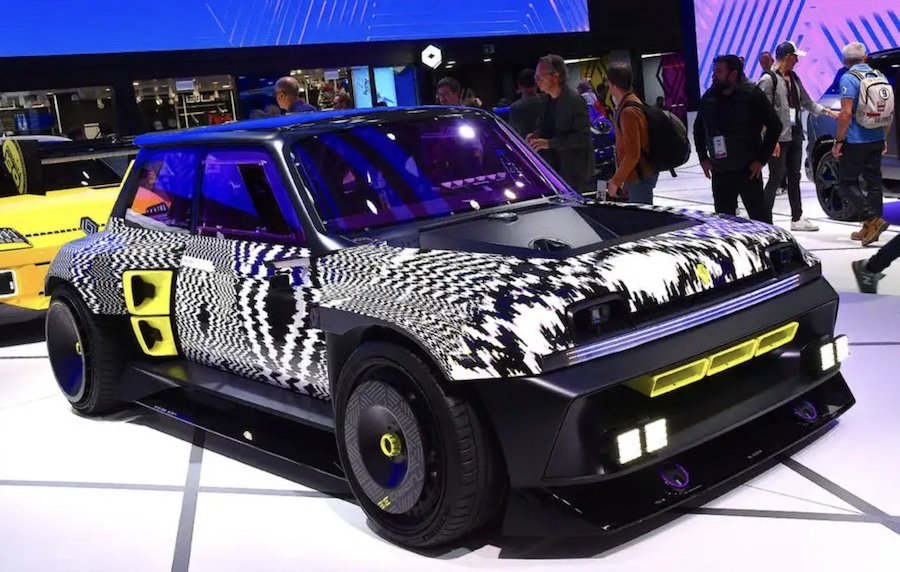Renault 5 Turbo 3E racer possible for production, says CEO

Renault is seriously considering making the Turbo 5 3E, company boss Luca de Meo has confirmed to Autocar.
Speaking at the Paris motor show, de Meo said the decision would be down to cost. “The question is if we have the money to do it,” he said.
Currently, there is not a World Rally Championship class for such a car, but with turmoil in the WRC, it’s not a huge stretch to imagine it could reinvent as an electric competition in the coming years.
Speaking on the Turbo's performance, De Meo said: “we have found a technical way of doing something pretty special in the concept.”
It has been 50 years since the launch of the Renault 5. To mark the occasion, the iconic Turbo 2 has been reinvented as a 374bhp electric drifter.
The Renault 5 Turbo 3E prototype, which joins the Renault 5 at the Paris motor show, has been created to show that EVs can be fun, said deputy design boss Gilles Vidal, while paying homage to the special sport variants of the French firm’s past.
To do this, three drift modes have been added - something not seen on the original 1980s hot hatch. These program the car to allow for easy drifts, donuts or just quick, “playful” driving.
When one of the drift modes is active, pink, blue and yellow LED stripes flash on the front of the car, adding to the “1980s video-game vibe”.
Want to show your mates your drifting skills? Renault has thought of that too, integrating 10 mounting brackets for cameras, such as GoPros, inside and outside the bodywork.
Drifting is helped by a rigid tubular chassis, a flat base, a roll bar, a carbonfibre body and a wide steering angle.
A deep air inlet on the front of the car aids downforce and cools the battery and a massive wing pushes the rear wheels into the road to keep the car planted.
These wheels are driven by a motor each, combining to produce 374bhp and 516lb ft. They can push the 5 Turbo 3E from 0-62mph in just 3.5sec, and all the way to 124mph.
A 42kWh lithium ion battery powers the motors, which can be fully charged in two hours via a 32A charger. A range of around 200 miles is expected, although no official figures have been given.
Related News
